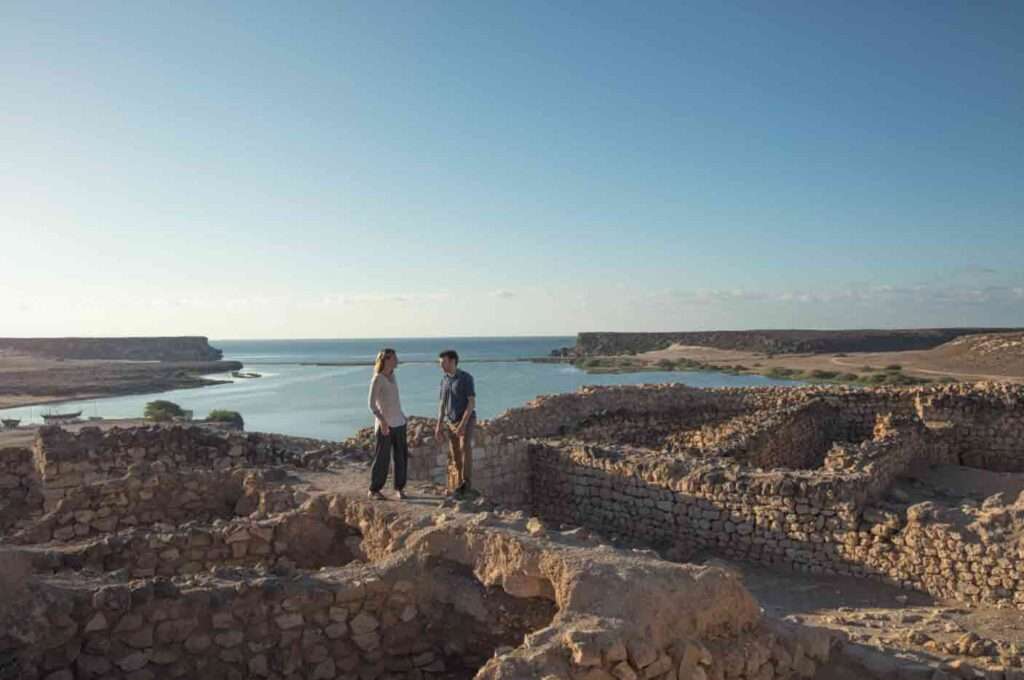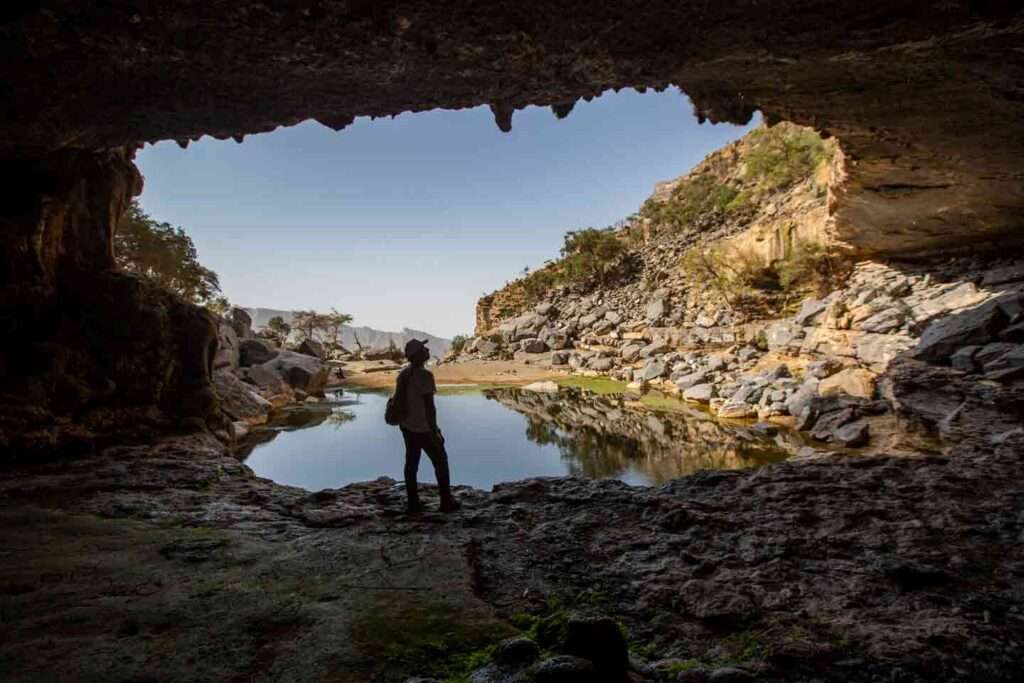Culture

DAY 1
MUSCAT
Oman’s capital has a lot to offer for those seeking to learn more about Omani culture and heritage. First, visit the Royal Opera House Muscat which is open for guided tours in the morning – or visit in the evening when the venue hosts shows and its stunning beauty and musical ambitions of this architectural marvel truly shine. Muscat has many interesting museums and galleries worth exploring. The National Museum in Old Muscat recently opened to the public and with magnificent exhibits and stunning location is a must when in the city. Bait Al Zubair not far away is a former residence-turned-museum, filled with artefacts from Oman’s history. Other museums include the Children’s Museum, the Natural History Museum, Omani French Museum and more.
DAY 2
OLD MUSCAT
The old part of Muscat, with its traditional architecture and rich history, is the perfect place to continue a cultural holiday. Al Alam – the ceremonial palace of His Majesty Sultan Qaboos – is nestled in the heart of Old Muscat, flanked by the Al Mirani and Al Jalali Forts on either side and facing a secluded bay. Re-built in the 1970s, the palace is the Sultan’s official representative palace, where he welcomes dignitaries and world leaders. Parts of the first tarmac road to ever be built in Oman still exists today and can be viewed along the old Riyam to Muscat Road. Expect some stunning views of Old Muscat, including a great view of the Sultan’s Palace. Muttrah’s corniche is a great place to visit, especially at night. Muttrah Souq is one of the oldest in Arabia and is the perfect place to barter for souvenirs.
DAY 3
SUR
Located about two hours from Muscat along a scenic coastal road, the city of Sur still upholds the age-old tradition of Dhow building and maritime culture. The last remaining Dhow factory gives tourists the unique chance to see Dhows being built without plan – according to ancient traditions. Close to the Dhow factory is the Sur Maritime Museum, where this ancient art of Dhow building and Oman’s maritime culture are further explained. Built by the Portuguese to assist boats to come into the lagoon, the neighbourhood of Al Ayjah is rich in history and home to the Al Ayjah lighthouse. In the past, residents had to take boats to reach the other side, today a bridge spans across the water. Spot the beautiful old merchant houses during a walk around.
DAY 4
ASH SHARQIYAH SANDS
About 115km west of Sur lies the edge of the Sharqiyah Sands. The desert awaits! A favourite with locals and visitors alike, Wadi Bani Khalid is the perfect place to enjoy a refreshing swim in its natural pools. Since many villages are nestled around the wadi, visitors are asked to dress modestly at all times. The Ash Sharqiyah Sands has a number of desert camps, from traditional to luxurious, that welcome visitors for an overnight stay. Often this is combined with a camel ride, dune driving or meeting a Bedouin family.
DAY 5
JABREEN CASTLE, BAHLA FORT & NIZWA
Today’s destination is the city of Nizwa, but first a stop at one of Oman’s most beautiful castles plus the Sultanate’s largest fort. Jabreen Castle was built in the 17th century and commands panoramic views of the surroundings date plantations. Over three stories tall, the castle was once a private residence, not a fortification, and its intricate ceilings and clever layout are still a sight to behold. Bahla Fort is Oman’s largest fort and also a UNESCO World Heritage Site, having been restored in accordance with the ancient methods since 1987. Next is Nizwa, and like Muscat the city holds a sprawling souq. Nearby is one of Oman’s most famous forts, Nizwa Fort.
DAY 6
JEBEL AL AKHDAR
Amongst the highest peaks in the Hajar Mountain range, Jebel Al Akhdar boasts spectacular views and cooler temperatures. Jebel Al Akhdar’s green terrace fields include rose bushes that bloom in March every year. It is then that local entrepreneurs distil rose water from the blossoms, an ancient tradition that visitors are welcome to observe. There are several hiking and off-roading trails across the mountain top that that can be explored. Wadi Bani Habib, with its abandoned villages, is especially interesting for visitors.
DAY 7
AL HAMRA & TOMBS OF AL AYN
Moving down the mountain and further inland, this day features a visit to one of Oman’s most scenic old towns plus another UNESCO World Heritage Site. Nestled at the foot of the Al Hajar Mountains, Al Hamra has numerous mudbrick buildings making up its old centre. Best explored on foot, the settlement includes Bait Al Safah – a museum where locals show visitors first-hand the daily household routine of a traditional Omani house. A short drive up the mountain from Ibri are the beehive tombs of Al Ayn and Bat, both of which form part of a UNESCO World Heritage Site. They are the most complete collection of settlements and necropolises from the 3rd Millennium BC in the world, so are definitely worth the two-hour drive from Al Hamra.
DAY 8
MUSCAT
Back in Muscat, this is the perfect opportunity to visit the Sultan Qaboos Grand Mosque before catching a flight to Salalah, in Oman’s southernmost governorate of Dhofar. Built as a present from His Majesty Sultan Qaboos bin Said to the people of Oman, the Sultan Qaboos Grand Mosque is an architectural masterpiece. Non-Muslims are welcome from Saturday to Thursday from 8am until 11am.
DAY 9-12
SALALAH AND SURROUNDINGS
Best visited during the Khareef (Monsoon) season, Salalah’s rich cultural heritage dates back centuries – when the region was one of the most important trading points for Frankincense and other goods. Held to celebrate the monsoon season, Salalah’s Khareef Festival (also known as the Salalah Tourism Festival) is held annually from around mid-July until the end of August. The festival offers cultural, arts, sports and shopping activities for all. A day trip east of Salalah can include attractions such as the coastal village of Mirbat, the nearby Anti-Gravity Point and a photostop at the Jebel Samhan Plateau. The drive up the mountain can be combined with a visit of Wadi Darbat and Tawi Ateer Sinkhole. The traditional round huts of the Jeballi people are of special interest. Worth another day trip, the attractions west of Salalah include Mughsayl Beach and its blowholes plus Wadi Dawkah Reserve, a UNESCO World Heritage Site that spans over five square kilometres area, densely populated with Boswellia sacra – or Frankincense trees



